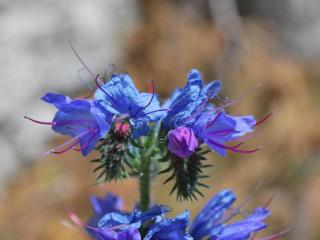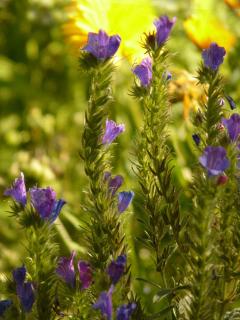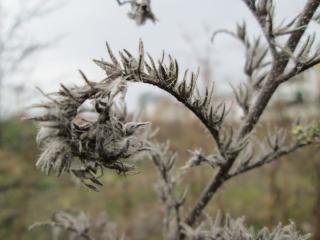

Despite its rather uninviting name, this biennial plant boasts lovely bluish flowers. Viper’s bugloss offers a range of therapeutic properties. Calming, diuretic, expectorant… Explore the benefits of Echium vulgare and learn how to cultivate it in your garden!
Why this peculiar name? Its fruits resemble snake tongues. Its tall stems have long lance-shaped leaves covering them.
Delicate, fine foliage, coated in a fuzz, gives it a gray shade. Floral spikes stand 6-12 inches high at the stem ends. Overall plant height is getween 24 and 36 inches, adding volume to a garden bed. Viper’s bugloss is very hardy, down to tolerates down to 5°F (-15°C), which makes it one of the best cold-hardy plants for the garden.
→ Here’s a fun fact: Viper’s bugloss attracts butterflies!
Beware: consuming viper’s bugloss in large amounts isn’t recommended. Indeed, it contains pyrrolizidine alkaloids that might give your liver a hard time. Pregnant and breastfeeding women shouldn’t use it either.
You’ll often find viper’s bugloss just sprouting on a roadside, on wastelands, or rocky hillsides.
 It does great in pretty much any soil type, as long as it’s well-drained and not too rich. Limestone, sea spray, drought, it’ll cope with these challenges without any problems. However, soggy soil is a definite no-go: it can’t deal with too much water. Regarding exposure, give it direct sunlight!
It does great in pretty much any soil type, as long as it’s well-drained and not too rich. Limestone, sea spray, drought, it’ll cope with these challenges without any problems. However, soggy soil is a definite no-go: it can’t deal with too much water. Regarding exposure, give it direct sunlight!
In colder regions, consider growing in pots. That way, you can bring it inside when winter rolls in, if ever it gets very cold.
 When sowing this annual or biennial beauty in April (after frost threats subside), bury the seeds a few inches deep (3-5 cm). Press down, water, and keep the soil moist till you see sprouts. When 3-4 leaves have appeared, thin out to about 12 inches (30 cm) apart.
When sowing this annual or biennial beauty in April (after frost threats subside), bury the seeds a few inches deep (3-5 cm). Press down, water, and keep the soil moist till you see sprouts. When 3-4 leaves have appeared, thin out to about 12 inches (30 cm) apart.
It’s also possible to start a bit earlier in nursery pots, and some garden stores also sell seedlings. Once your plant reaches five leaf pairs, transfer your container to its final growing bed. If going with potted containers, a drainage layer at the bottom such as clay pellets or gravel is key.
For viper’s bugloss, less is often more. A bit of watering after planting, then let it be!
 Potted ones, however, dry out much faster. They’ll need bi-monthly water sessions with a dash of liquid fertilizer.
Potted ones, however, dry out much faster. They’ll need bi-monthly water sessions with a dash of liquid fertilizer.
If you’d prefer not to have self-sown seeds sprout in the following year (which they will!), snip off faded flowers.
Over winter, bring your potted plant to a cool, lighted spot. For those overwintering outdoors, cover the soil with them a layer of mulch and wrap them with a winter veil.